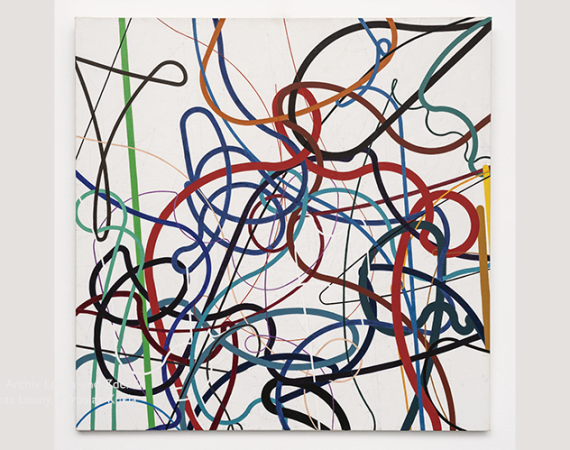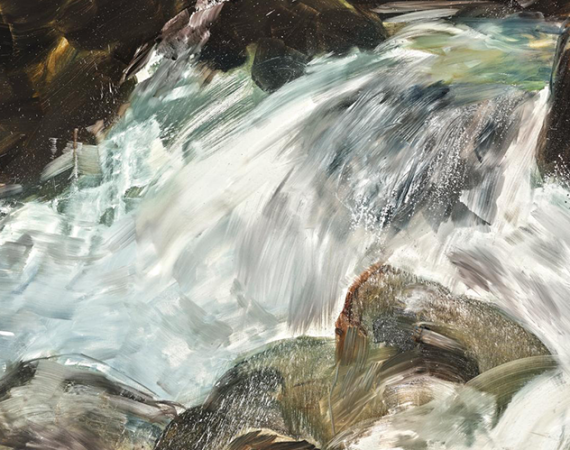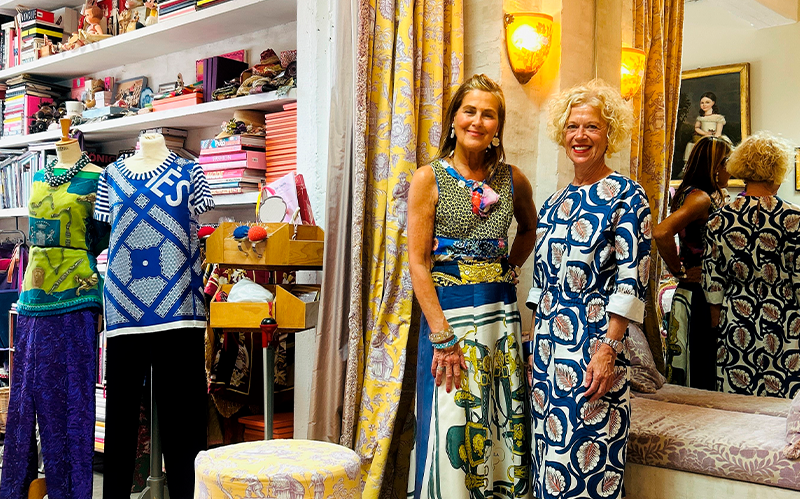
Coppenrath Verlag and Siggi Spiegelburg’s couture studio are based in the warehouse buildings on Kreativkai in Münster in Germany: the perfect setting for a Dorotheum consultation day. Petra Schäpers, Specialist for Modern and Contemporary Art at Dorotheum, met with the publisher and designer to discuss art and fashion.
Petra Schäpers: Spiegelburg is more than just a brand – it’s a lifestyle, maybe even a way of life, isn’t it?
Siggi Spiegelburg: Yes, definitely. Just look around: this place is brimming with creativity and the desire to design something. Our private life is just as colourful as our entrepreneurial life.
I understand you started sewing children’s clothes early on, putting bows on socks and shoes – is that true?
I started sewing when I was 16. Back then, I was mostly making clothes for myself and hadn’t even thought about having children yet. I myself have eight siblings. When I was 18, I met my husband, who had just started his own publishing company, Hölker Verlag. He started with regional cookbooks, whose textile binding and printed grease stains were a novelty at the time. Not long after that, we bought Coppenrath Verlag. This publishing house initially focused on children’s and gift books; then we went on to create soft toys to go with the children’s books and an entire universe revolving around the book – a series called Die Spiegelburg. Now the parent company is called Coppenrath, and under its umbrella are Die Spiegelburg, Hölker Verlag, and Bohem Verlag. It has grown and evolved over the years.
When was that?
That was in the 1980s. The first children’s book came out shortly after my first daughter was born, around the same time I realised there weren’t many clothing options for kids. So, I started sewing everything myself, from trousers to jackets to teddy bears. One evening, my husband came home and said he wanted to sell exactly those kinds of bears. That’s how we ended up sewing 500 pairs of dotted teddy bear trousers.
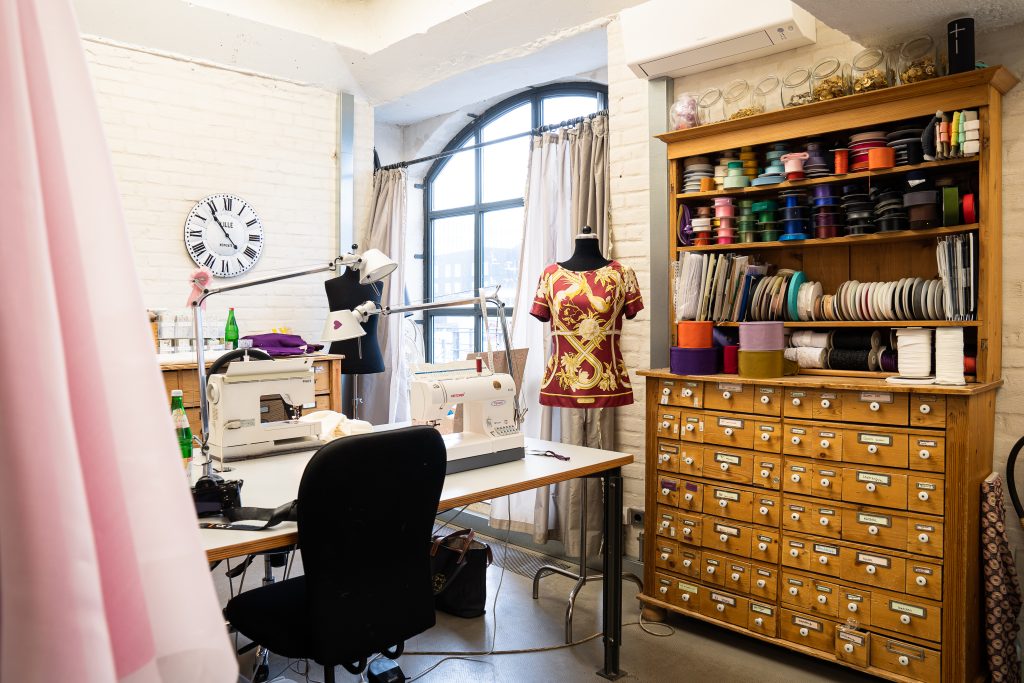
When did you make your first Hermès skirt? I’ve always been fascinated by the way you turned a Hermès scarf into a skirt, like the one you’re wearing today.
My first Hermès scarf was a gift from a friend of my husband’s, and I soon started thinking of other ways to use them. I wore them as headbands, wrapped them around my waist, used them as tops. Finally, in my late twenties, I cut up my first scarf. After that, whenever I went to Hermès, all they could say was: “We just had a customer who didn’t tie the scarf around her neck but held it in front of her body instead. So, we asked, ‘Are you by any chance seeing Mrs Spiegelburg?’”
Your fashion and surroundings have a fairytale quality to me. You’re like a fairy in an enchanted forest. The colours are bright and bold, the patterns large. There’s a sense of incredible opulence, even though the cuts are quite simple, wouldn’t you say?
We focus on the fabrics. The cut looks as if you just take two scarves and sew two seams, but it’s much more complex because everything has to fit together perfectly. Plus, each scarf is only 90 centimetres square.
You and your husband, Wolfgang Hölker, collect antiques and live surrounded by art. Does that influence your fashion designs? I’m curious as an art historian.
Absolutely. I worked in Florence and the surrounding region for ten years and spent a lot of time in museums. The way fabrics drape in those paintings, their opulence, the way they fall and how the sheen of the materials is captured – I’m fascinated by it.
So that’s where it comes from – the mannerism, the use of colour …
Yes, definitely, but no one has ever asked me about it before.
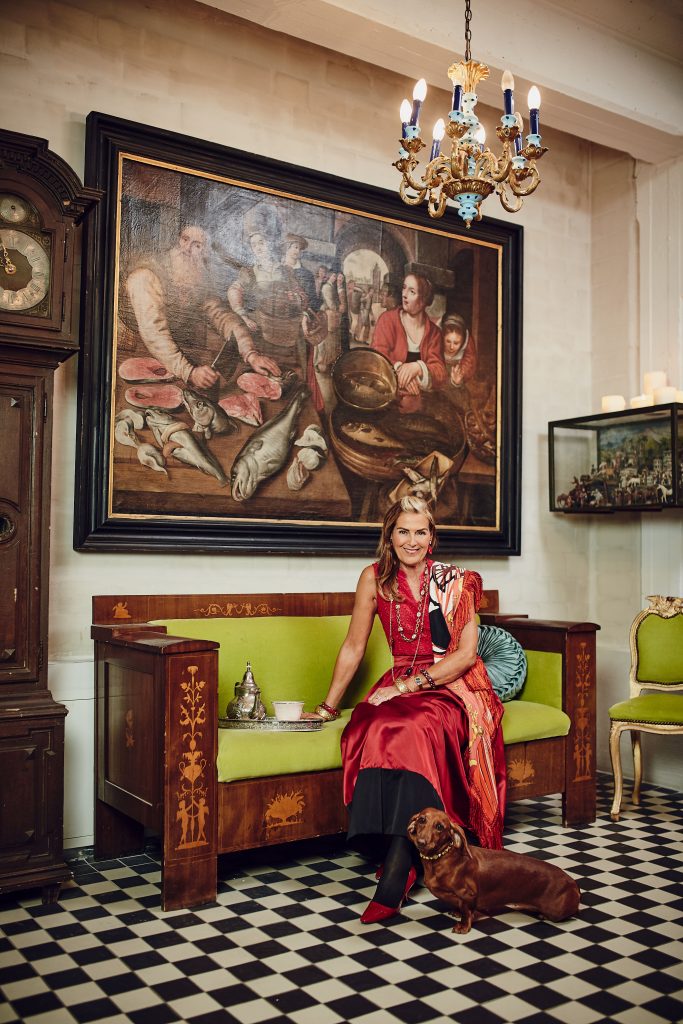
Siggi Spiegelburg: “Honestly, I collect everything.“ Photo: Keno Topilin
So, you live with historical furniture and art. What do you collect?
Honestly, I collect everything. It’s not all art; some objects are just beautiful. Our collection is based on memories and stories. We met the artist Christo, who was still completely unknown to us at the time, by chance in a hotel in Miami Beach at the beginning of the 1980s. He was working on his Surrounded Islands project at the time – today we have a piece of his from that time.
The two of you make a great team. Do you also work together conceptually in the way the companies have fused together? Is there the same opulence at Coppenrath as there is in your studio?
Definitely. It’s all intertwined. In the early years, I was heavily involved in product development. Now, there’s a large team working there. The company has expanded tremendously, as has mine. Many employees still come to the studio for inspiration, to see the colour combinations we create with different fabrics and other elements.
So, the opulence extends to what you collect. I imagine you wouldn’t buy abstract contemporary art. It’s diversified. It’s a conglomerate.
We love going to Gallery Weekend in Berlin, or to art fairs, but we wouldn’t buy an artist’s work just because they’re fashionable. For us, art has to tell a story, it has to be fun. I think I’m more drawn to pieces that aren’t immediately recognisable.
One last question: Have your spaces ever featured in the Münster Tatort? Referring, of course, to the German-language police drama …
They have indeed. The crime scene was right here at the harbour. Filming took place partly in what we call Speicher 3, where you are holding your consultation day today. I wasn’t around that day, but I would’ve loved to walk through the shot in one of my colourful skirts.









